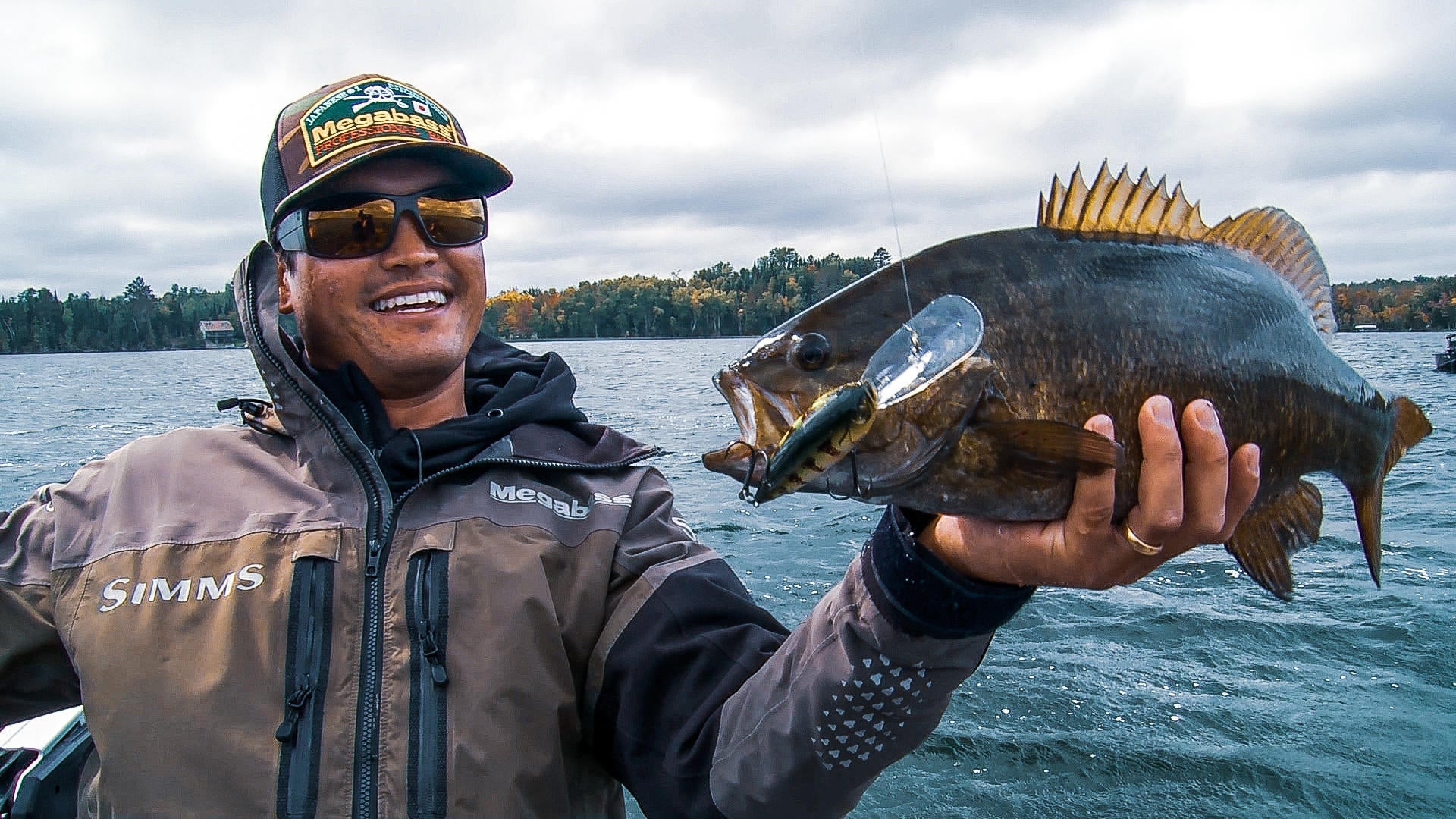How do you catch bass when they’re suspended off the bottom in mid-depth to deep water areas? According to Chris Zaldain, you have three options — a swimbait, jerkbait or crankbait. Burning crankbaits off the bottom is an overlooked and productive method for triggering smallmouth and largemouth bass feeding upward on baitfish. Zaldain goes into detail by sharing 5 tips to help you catch these challenging high flying bass.
FEATURED TACKLE & EQUIPMENT:
- Megabass Deep-Six Crankbait, color – PM Kisyu Ayu
- Megabass Destroyer Javelin Casting Rod, F5-75X
- Seaguar Tatsu Fluorocarbon Line, 12lb
- Shimano Casting Reel – Tackle Warehouse
- Humminbird HELIX 12 CHIRP MEGA SI+ GPS G4N (Tackle Warehouse)
- Humminbird HELIX 12 CHIRP MEGA SI+ GPS G4N (The Bass Tank)
ZALDAIN’S 5 OPEN WATER CRANKING TIPS
- Use deep-diving crankbaits when bass are suspended 3- to 5-feet off the bottom and feeding upward on baitfish. Bottom baits like a drop shot, jig or tube are often too low to trigger these fish, whereas deep-diving crankbaits that reach the 15- to 17-foot zone trigger aggressive reaction strikes from bass chasing baitfish.
- Modify your crankbait color to match the forage. Zaldain selects a crankbait color that matches the forage as closely as possible, then further refines color patterns through stippling, that is, making numerous small dots or specs for matching scale patterns. He stipples his crankbait on this day to resemble yellow perch.
- Make long casts. Long casts allow you to get the bait to its max running depth and extend time in the strike zone. Open water bass are more apt to follow your bait; more time to chase means more open water collisions. Zaldain details his crankbait rod setup in the video.
- Position your boat shallower on the structure. Working the bait uphill matches dive trajectory to the structure and keeps the crankbait it in the strike zone longer.
- Crank the water column, not the bottom. This pattern is the opposite of creating bottom deflections with the crankbait. Keep the bait off of the bottom and at the level or slighter higher than the bass. Use your 2D sonar or real-time imaging (if equipped) to keep your bait in the right depth. These are baitfish chasers, not crawfish eaters.












